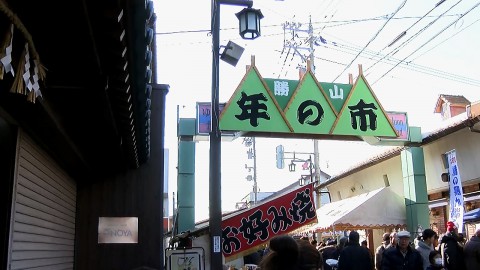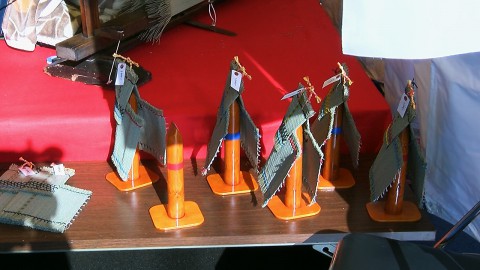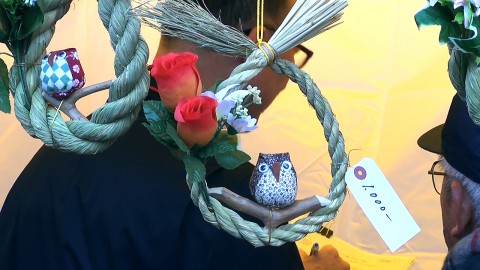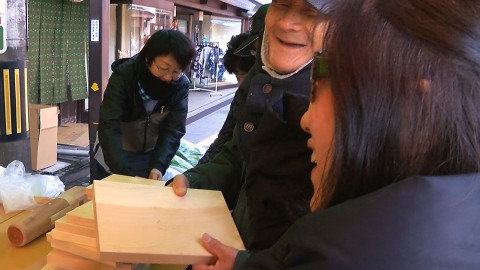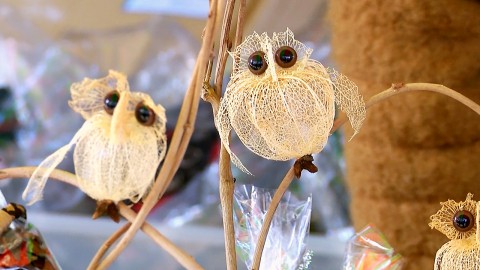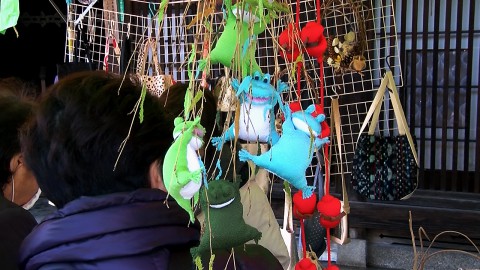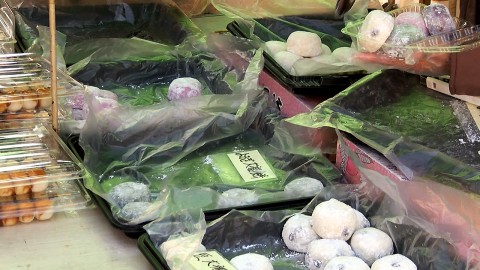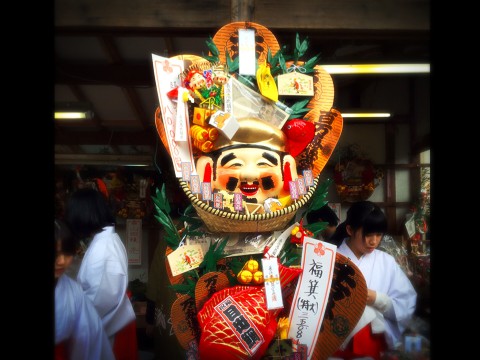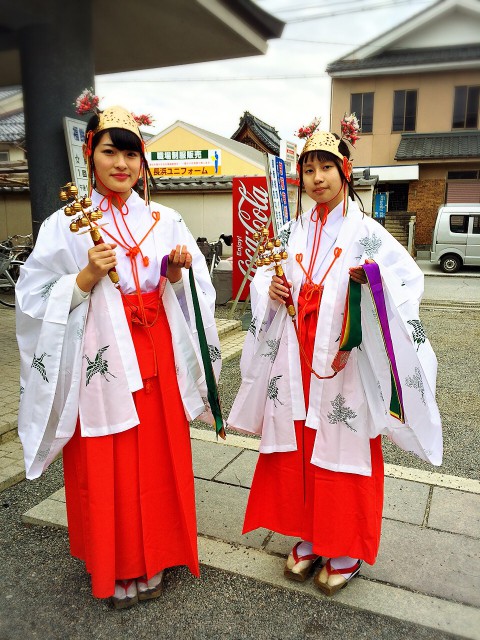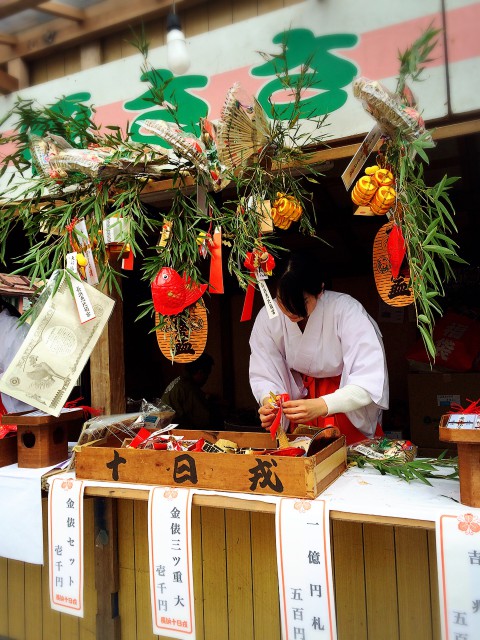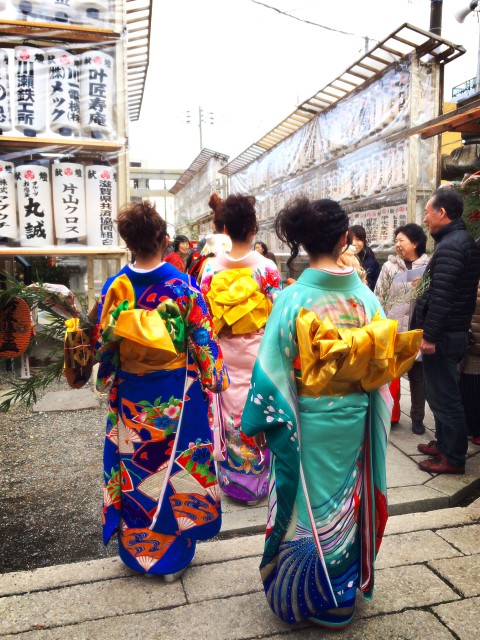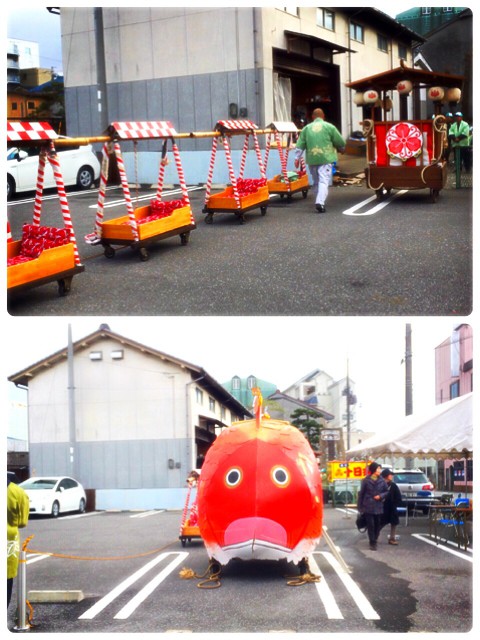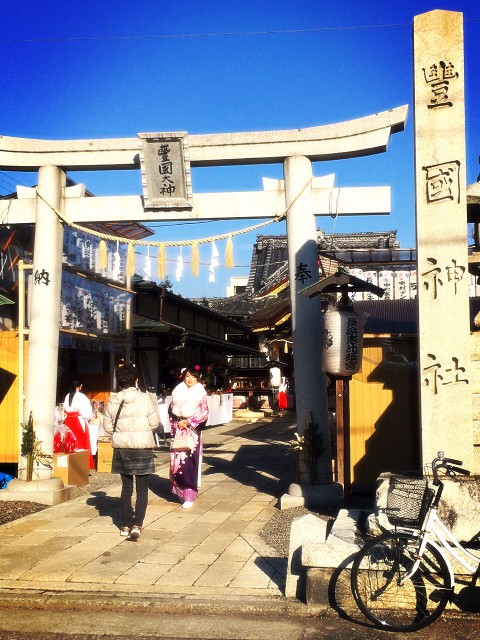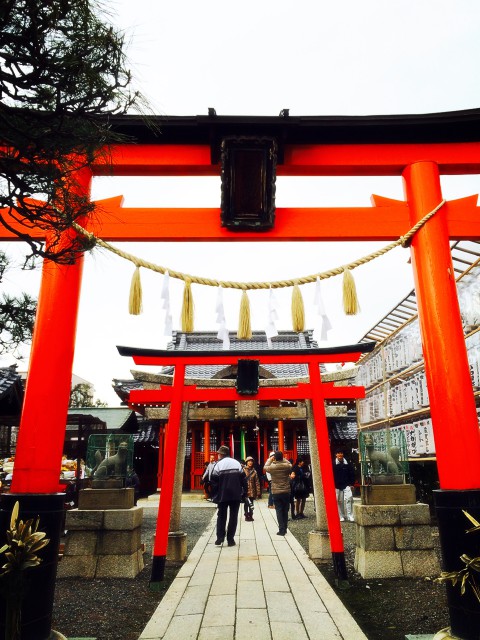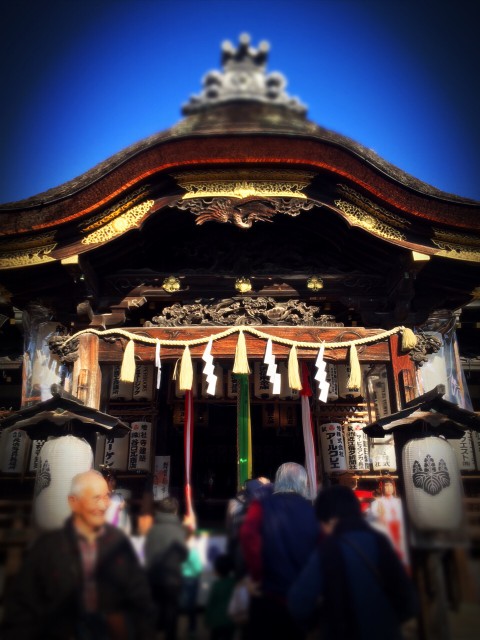Japanese Lottery Machine, Garapon
2016.02.09
As I wrote in our previous blogs,
we visited the New Year’s fair in Katsuyama City, Fukui Prefecture.
Many people lined up in front of a Japanese lottery machine called “Garapon”.
“Gara” refers to the sound which makes during turning
the handle of the machine with many lottery balls inside.
“Pon” is a situation which describes a lottery ball comes out.
Prizes were various such as candies, cup noodles and so on.
I received one of the winning balls!!
I got a cup noodle and it was my favorite one, too.
This type of lottery machine were originally invented by a hatter,
Mr. Arai Takuya for his customer at his hat shop in Tokyo.
He used to use a square hat box.
And he wanted it to make more sound during turning the box
so he kept trying to improve the box.
Finally, he changed the shape of it to how it looks now.
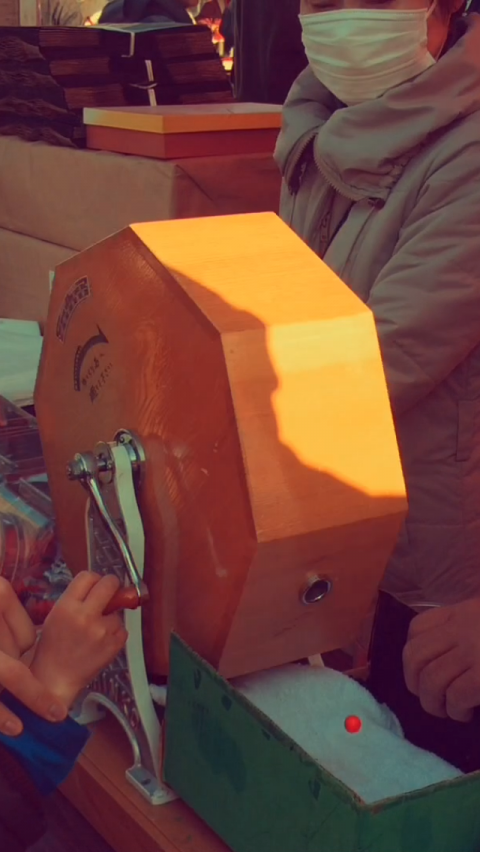
Its official name of the lottery machine is named after the hatter, Mr. Arai,
“Arai-shiki Kaiten Chusen-ki” (Arai system wheel lottery machine).
It is a patented product for Tokyo Lottery Machine Laboratory.
T.F



